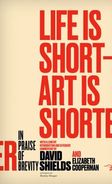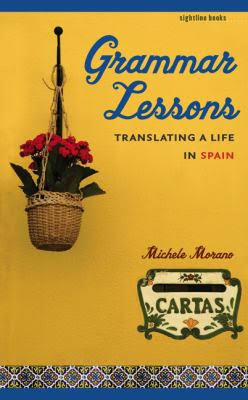 Today’s nonfiction writers have at hand a number of forms other than the essay and the memoir. There’s the flash essay, of course, and literary journalism. Then there’s the catch-all form of nonfiction known as the lyric essay. So, what do they all mean? Flash It’s easy to find an anthology on the flash form, possibly because Dinty W. Moore made the form famous in Brevity. He also edited the Rose Metal Press Guide to Writing Flash Nonfiction, an anthology that contains a rather academic intro to discuss the flash essay, several examples of it by Nicole Walker, the late Judith Kitchen (likely the quintessential expert on the form and its biggest champion), and many others. These writers also offer writing prompts or assignments that let writers start off with a bang. David Shields and Elizabeth Cooperman have compiled another anthology of short essays called Life Is Short— Art Is Shorter. The book claims to be a “rally for compression, concise, and velocity.” It begins a chaotic mess potentially intended to be a collage essay masking as an introduction by Shields. The rest, however, is another worthy collection of examples of the flash essay and prose poems. They’re gathered into sections called “Object,” “Prose Poem,” “Image Becomes Metaphor.” There are also sections that demonstrate the collage essay, trick stories, and criticism as autobiography as written by the likes of Lauren Slater, Lydia Davis, and Anne Lamott. Check out the full post, including more examples of alternatives and places to find these forms.
0 Comments
 Michele Morano’s essay collection, Grammar Lessons: Translating a Life in Spain, a book of thirteen essays, is divided into three sections. The first concerns her year of living in Oviedo, teaching English and recovering from a consumptive relationship with a man she left back in the States. In the second section she writes about subsequent trips to Spain, trying to recapture some of the initial spark of travel yet it digs deeper into her first trip. The third section contains post-travel essays. Morano writes about the fun and frivolities of language as only writers know. She is immersed in language as a student of Spanish and an English teacher. “I am hungry, we say in English,” she writes in “Having Hunger,” an essay about language, passion, and hunger. “But in Spanish one uses a noun, as if naming a possession, a visitation, a tide of physical yearning. Tengo hambre: I have hunger.” This essay’s intro showcases Morano’s deft ability to create a subtle double entendre. Yet again it contains those qualities of universality in which we witness our own hunger for routine, people, familiarity, touch, spontaneity, sex, and, food. Read the original post on Ploughshares. |
What my clients are sayingYou have a good grasp of what is needed...Thank you so much for your diligence and dedication to getting this turned around so quickly and comprehensively." |
Check me out on LinkedIn or email me. |
 RSS Feed
RSS Feed